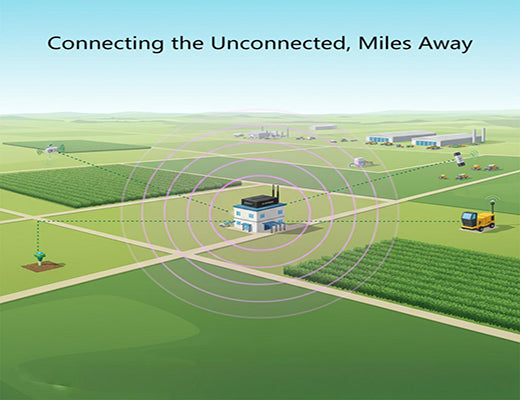
What is LoRaWAN? A Beginner's Guide to the Leading LPWAN Technology
|
|
Time to read 5 min
|
|
Time to read 5 min
So, what is LoRaWAN? In simple terms, LoRaWAN is a leading Low Power, Wide Area Network (LPWAN) protocol designed specifically for the Internet of Things (IoT). Its purpose is to connect small, low-power devices like battery-operated sensors to the internet over very long distances (miles or kilometers). This guide will break down the LoRaWAN architecture, explain how it differs from technologies like Wi-Fi and Cellular, and show you the key components you need to build a network.
LoRaWAN is a communication protocol optimized for long-range (kilometers) and low-power (multi-year battery life) communication, making it ideal for battery-powered IoT sensors.
A complete LoRaWAN network consists of four main components: End Nodes (the sensors or lorawan devices), Gateways (the bridge to the internet), a Network Server (the brain), and an Application Server (the dashboard).
LoRaWAN is not a replacement for Wi-Fi or 5G. It is a complementary technology purpose-built for applications that send small, infrequent data packets over vast distances.
The difference between LoRa and LoRaWAN is simple: LoRa is the physical radio signal, while LoRaWAN is the networking protocol that organizes how the devices and gateways communicate.
I've had this conversation with dozens of innovators. An agricultural engineer wants to monitor soil moisture across a 500-acre farm. A facility manager needs to detect water leaks in the basement of a massive warehouse complex. In every case, they face the same impossible challenge: there's no power and no Wi-Fi. Running cables is a non-starter, and a cellular plan for a thousand simple sensors would be a financial nightmare.
How do you connect the unconnected? For years, this question held back a huge number of brilliant IoT ideas.
Let's be clear: that problem has been solved. The solution is a technology designed from the ground up for exactly these kinds of challenges. The answer to "how?" is LoRaWAN.

Think of a LoRaWAN network like a city-wide walkie-talkie system for "things."
The real 'aha!' moment for most people is when they distinguish between LoRa and LoRaWAN:
These are the battery-powered sensors out in the field doing the actual work—measuring temperature, detecting leaks, tracking assets, reading meters, etc. They are the heart of the network.
Learn More:
A lorawan gateway is the hardware that receives the LoRa radio messages from the end nodes and forwards them to the internet. A single gateway can handle thousands of devices across a multi-kilometer radius. For reliability, these gateways often use a 4G or 5G cellular connection for their internet backhaul.
This is where the raw, cryptic sensor data is finally turned into meaningful information. The application server decodes the data payload (e.g.,0x08A0 becomes 22.4°C) and displays it on a dashboard, integrates it into another software platform, or triggers alerts.

LoRaWAN isn't a competitor to Wi-Fi or 5G; it's a completely different tool for a different job. Choosing the right one is critical.
Feature |
Wi-Fi |
Cellular (4G/5G) |
LoRaWAN |
Range |
Short (Meters) |
Medium (Kilometers) |
Very Long (Many Kilometers) |
Power Consumption |
High |
Medium |
Extremely Low (Years on battery) |
Data Rate |
Very High (Mbps/Gbps) |
High (Mbps) |
Very Low (Kbps) |
Best For... |
Office/Home Internet, Video |
Mobile Broadband, High-Data IoT |
Low-Power Sensors, Asset Tracking |

So, what is LoRaWAN? It's the key enabling technology for a massive new class of IoT applications that were previously impossible. It's the right tool for connecting things that are far away, hard to reach, and need to run on a single battery for years. By understanding its unique strengths and how a network is structured, you can start to envision how this powerful technology can solve your own long-range sensing challenges.
A1: The LoRaWAN standard itself is open and free to use. However, to deploy a solution, you need hardware (sensors and gateways) and a network server. You can either build a private network by buying your own gateways, or you can pay a subscription fee to a public LoRaWAN network operator to use their existing network coverage.
A2: The range depends heavily on the environment. In a dense urban area with many buildings, you might get 1-3 kilometers. In a flat, rural environment with a clear line of sight between the device and the gateway, ranges of 10-15 kilometers (or even more) are commonly achieved.
A3: This is the most common question! Think of it like this: LoRa is the physical radio signal, the equivalent of the sound waves used for speech (the physical layer). LoRaWAN is the protocol, the equivalent of the language and grammar that structures the speech into a coherent conversation (the MAC and network layer). You need both to have a working system.